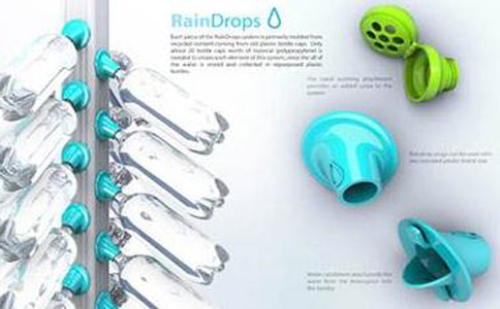Introduction: Rainwater storage facilities are divided into two types: ground storage and underground storage. Large-scale buildings such as urban ground, roofs, and parking lots can be used as catchment surfaces, and rainwater can be transported to the reservoir through an effective transportation system. In reservoirs and other water storage facilities, some developed countries mostly use tin roof collecting to store pooled runoff in a reservoir. Urban rainwater recycling and utilization should be based on different ecological environment, water characteristics, building distribution characteristics and other factors in different regions to select suitable rainwater recycling methods to maximize urban rainwater utilization. Urban rainwater recycling mainly includes the following methods: General Mechanical Parts,Steering Wheel Mould,Building Construction Material,Auto Steering Wheel Cover For Car CHANGGE FUKANG MACHINERY ACCESSORIES CO. ,LTD , https://www.fkcasting.com
Establish urban rainwater retention facilities
Rainwater storage facilities are divided into two types: ground storage and underground storage. Large-scale buildings such as urban ground, roofs, and parking lots can be used as catchment surfaces. Rainwater can be transported to reservoirs, reservoirs, etc. through an effective transportation system. In water storage facilities, some developed countries mostly use tin roof collecting to store pooled runoff in a reservoir. However, the most economical method is to optimize and transform the low-lying land of the city with appropriate water diversion facilities so as to well store stormwater runoff. In addition, it is also possible to make full use of the rainwater drainage pipe network system that has been established in the city, and to establish a comprehensive and systematic water storage engineering facility in conjunction with the urban topographic trend. However, when there is a shortage of land on the ground, it is necessary to consider the use of underground reservoirs. The types of underground reservoirs are varied and their shapes can be varied. They can be designed in combination with rainwater infiltration.
Establishing a park rainwater harvesting and utilization system
In newly built residential quarters, parks, or similar urban parks with better environmental conditions, rainwater runoff from green roofs and road surfaces in the area can be collected and used to achieve more significant reductions in urban storm runoff and non-point source pollutant emissions, and optimize community Water system, reduce waterlogging and improve the environment and other effects. Due to the large size of the system and the wider area involved, it is necessary to handle the initial rainwater interception, purification, green space and road elevation, indoor and outdoor rainwater collection and drainage systems, and various groundwater runoffs associated with rainfall. As long as some simple rainwater recovery and storage projects are built, urban rainwater can be used for urban cleansing, irrigation of green land, and maintenance of urban water landscapes. Since the rainwater pollution is not heavy, it can be treated simply for domestic washing water, industrial water, etc.
Rainwater recycling and utilization projects in modern cities involve a wide range of fields and are also more complex, but they are also a promising area for development. Therefore, when rainwater recycling and utilization are carried out, we must adhere to local conditions and choose the utilization system based on the principle of seeking truth from facts. We must not consider the advantages and disadvantages of the collection and utilization and various infiltrating facilities and the applicable conditions, and must fully consider the water balance, hydraulic calculation and technical economy. Analysis to determine the program, so as to maximize the recycling of rainwater.